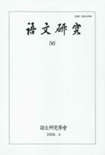- 영문명
- The Characteristics and Culturological Activation of Wanggeon Narrative in Muan Region
- 발행기관
- 어문연구학회
- 저자명
- 홍순일(Soon-il Hong)
- 간행물 정보
- 『어문연구』語文硏究 第56輯, 245~288쪽, 전체 44쪽
- 주제분류
- 어문학 > 한국어와문학
- 파일형태
- 발행일자
- 2008.04.30

국문 초록
영문 초록
This study argues that the narrative of a Wanggeon narrative of Muan regions in Jeonnam province can be utilized as a cultural resource in the digital era in the view point of "culturolocial local activation" because it presents "open diversity."
1) The human narrative in Muan, especially Wanggeon narrative has the same class with Gyeonhwon story, but a different class from the story of Neungchang, Na, deokmyeong, Na, Soongdae and Bae, Sangok. However, Wanggeon is in a political struggle with Gyeonhwon and in cross-linkage with Neungchang who is known for marine power, which reflects knotty relations in a fierce history in which heros have survived cutthroat battles.
2) The Wanggeon narrative was novelized with the battle scene between Wanggeon and Gyeonhwon as its center. It is narrated with a striking contrast between Wanggeon as a protagonist and Gyeonhwon as an antagonist. This structure appears through the story in which a white-haired old man who knows of current change of Youngsan River tells the secret of victory to Wanggeon in his dream. The dominant native spirit helps Wanggeon realize his dream of the unification of three nations. The key to victory in tills story is not the number of soldiers, but a fire attack. In addition, the Wanggeon narrative is operating in "the current story line in Muan," not only as the current property which can reach the past, but also as the capacity which can prospect the present. Therefore, it can be the key to understanding today"s local characteristics and can be referred to as a cultural factor of Muan together with a marine cultural factor of Sadosaeja story.
3) The Wanggeon narrative in Muan relies on Pagungyo village, or Pagun bridge village and Youngsan River (Mongtan River). Meanwhile, the narrative can be applied to creation of art, education of national defence, education of history, activation of civil culture and performance for "the enhancement of local residents" life quality." First, the narrative can be utilized for the creation of art, expressing an aesthetic value. Second, it can be used for the textbook of national defence, realizing an educational value. Third, it can be utilized as a cultural item to educate a local history, producing an economic value. Fourth, it can be used for the activation of civil culture which is the central movement of local residents, realizing a social-economic value. Last, it can be utilized as a performance of festivities which reconstruct the image of Muan regions, thus capturing a recreational value.
1) The human narrative in Muan, especially Wanggeon narrative has the same class with Gyeonhwon story, but a different class from the story of Neungchang, Na, deokmyeong, Na, Soongdae and Bae, Sangok. However, Wanggeon is in a political struggle with Gyeonhwon and in cross-linkage with Neungchang who is known for marine power, which reflects knotty relations in a fierce history in which heros have survived cutthroat battles.
2) The Wanggeon narrative was novelized with the battle scene between Wanggeon and Gyeonhwon as its center. It is narrated with a striking contrast between Wanggeon as a protagonist and Gyeonhwon as an antagonist. This structure appears through the story in which a white-haired old man who knows of current change of Youngsan River tells the secret of victory to Wanggeon in his dream. The dominant native spirit helps Wanggeon realize his dream of the unification of three nations. The key to victory in tills story is not the number of soldiers, but a fire attack. In addition, the Wanggeon narrative is operating in "the current story line in Muan," not only as the current property which can reach the past, but also as the capacity which can prospect the present. Therefore, it can be the key to understanding today"s local characteristics and can be referred to as a cultural factor of Muan together with a marine cultural factor of Sadosaeja story.
3) The Wanggeon narrative in Muan relies on Pagungyo village, or Pagun bridge village and Youngsan River (Mongtan River). Meanwhile, the narrative can be applied to creation of art, education of national defence, education of history, activation of civil culture and performance for "the enhancement of local residents" life quality." First, the narrative can be utilized for the creation of art, expressing an aesthetic value. Second, it can be used for the textbook of national defence, realizing an educational value. Third, it can be utilized as a cultural item to educate a local history, producing an economic value. Fourth, it can be used for the activation of civil culture which is the central movement of local residents, realizing a social-economic value. Last, it can be utilized as a performance of festivities which reconstruct the image of Muan regions, thus capturing a recreational value.
목차
Ⅰ. 머리말
Ⅱ. 왕건전설의 전승양상
Ⅲ. 왕건전설에 나타난 무안문화의 특성
Ⅳ. 왕건전설의 문화론적 활용
Ⅴ. 맺음말
참고문헌
[부록] 현지조사 자료
Abstract
Ⅱ. 왕건전설의 전승양상
Ⅲ. 왕건전설에 나타난 무안문화의 특성
Ⅳ. 왕건전설의 문화론적 활용
Ⅴ. 맺음말
참고문헌
[부록] 현지조사 자료
Abstract
키워드
해당간행물 수록 논문
참고문헌
최근 이용한 논문
교보eBook 첫 방문을 환영 합니다!

신규가입 혜택 지급이 완료 되었습니다.
바로 사용 가능한 교보e캐시 1,000원 (유효기간 7일)
지금 바로 교보eBook의 다양한 콘텐츠를 이용해 보세요!


